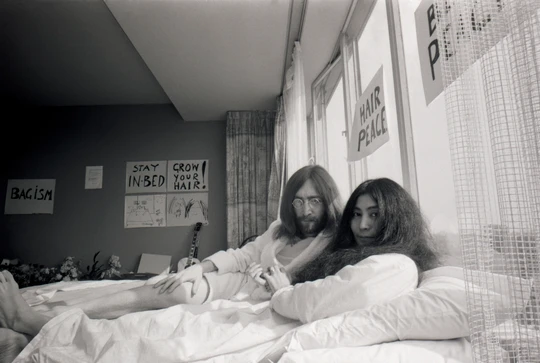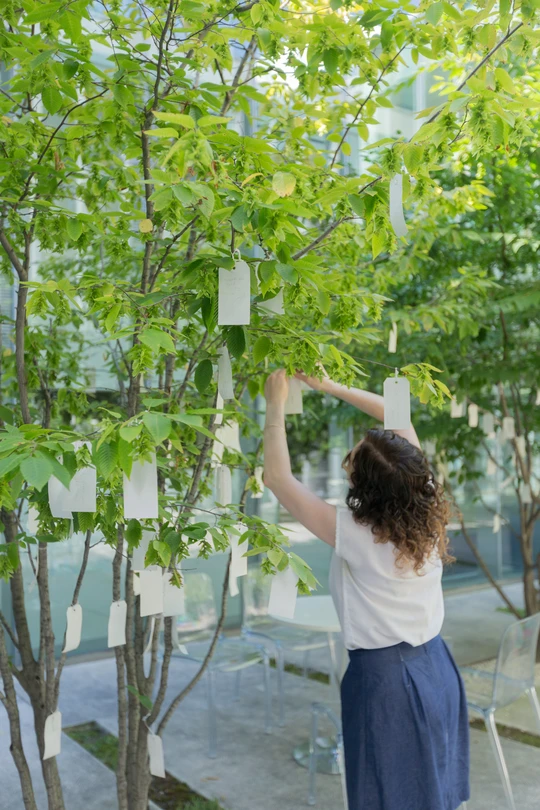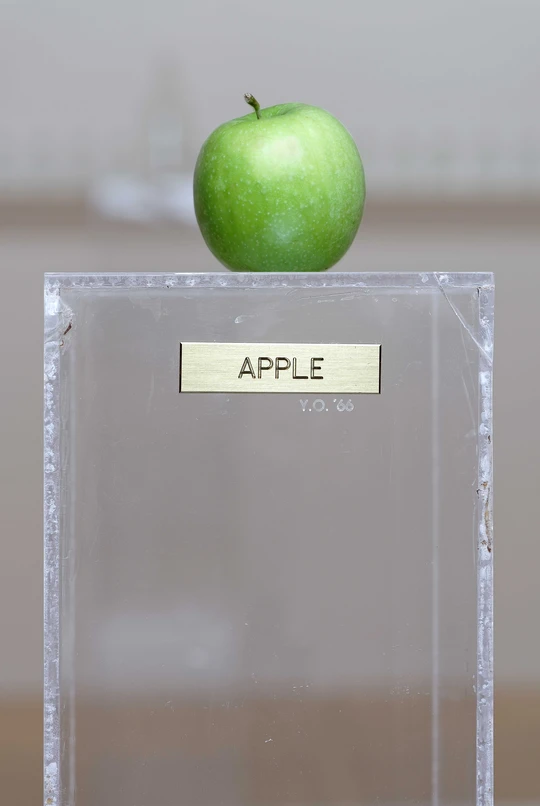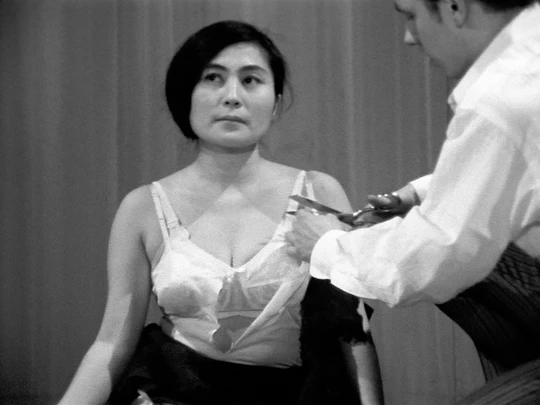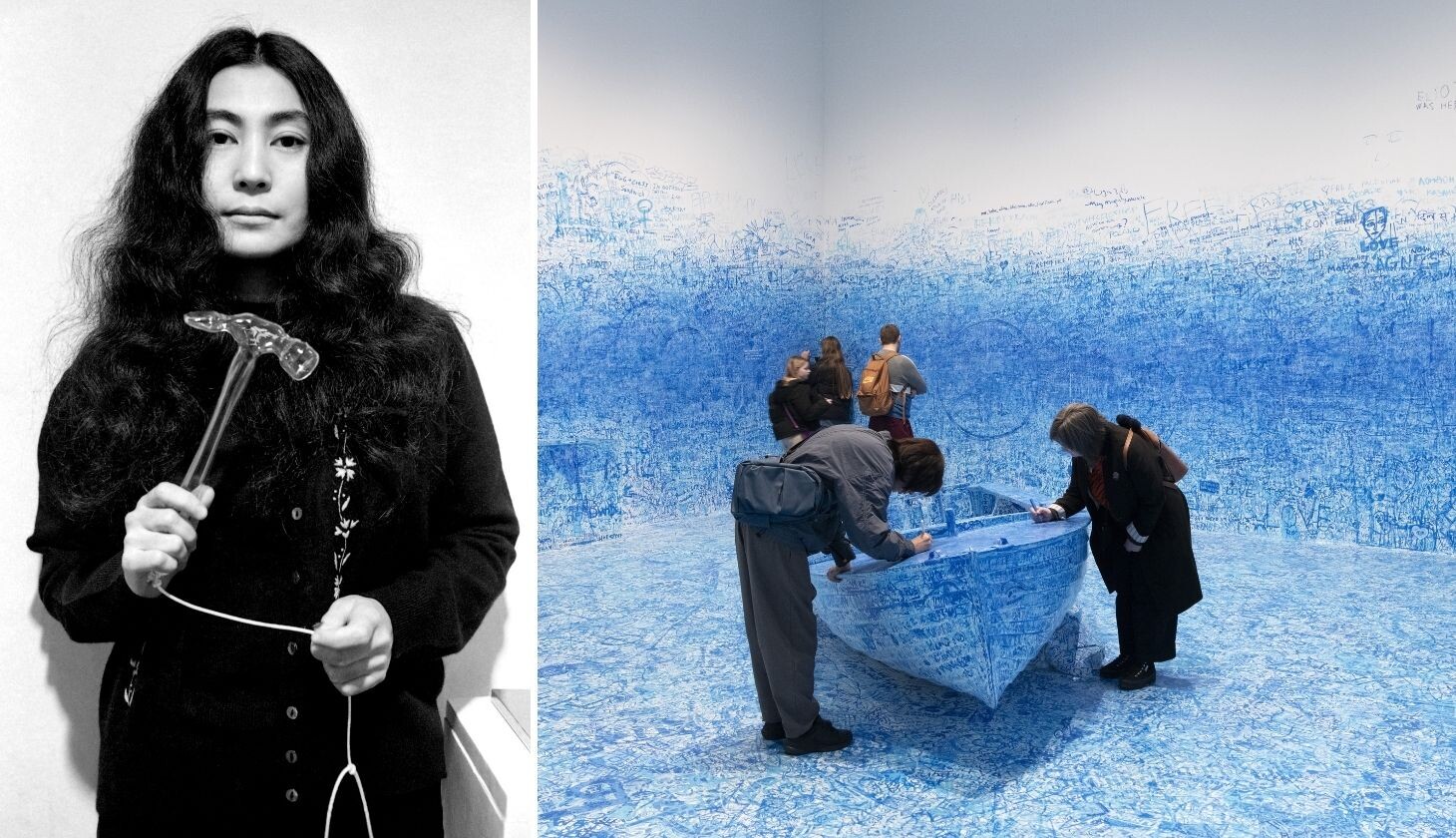
Yoko Ono, the visionary artist, musician, and activist whose work has shaped contemporary culture for more than seven decades, will be celebrated at The Broad in Yoko Ono: Music of the Mind, the artist’s first solo museum exhibition in Southern California, organized in collaboration with Tate Modern, London. In spring 2026, visitors will be invited to directly participate in many of Ono’s works that transform simple acts into expressions of peace and connection. The Broad’s olive trees on East West Bank Plaza will become Wish Trees for Los Angeles, a key installation (first realized in 1996 at Shoshana Wayne Gallery, Santa Monica) inviting audiences to tie their own wishes to the tree branches in a living expression of hope in Los Angeles. The...
Yoko Ono, the visionary artist, musician, and activist whose work has shaped contemporary culture for more than seven decades, will be celebrated at The Broad in Yoko Ono: Music of the Mind, the artist’s first solo museum exhibition in Southern California, organized in collaboration with Tate Modern, London. In spring 2026, visitors will be invited to directly participate in many of Ono’s works that transform simple acts into expressions of peace and connection. The Broad’s olive trees on East West Bank Plaza will become Wish Trees for Los Angeles, a key installation (first realized in 1996 at Shoshana Wayne Gallery, Santa Monica) inviting audiences to tie their own wishes to the tree branches in a living expression of hope in Los Angeles. The exhibition will be on view May 23 through October 11, 2026.
A belief that art could be made solely from the mind informed her early “instruction” works from the mid-1950s to today that will be on view in the exhibition. In these interactive pieces, short texts describe actions for viewers to complete or reflect upon. On view will be the typescript drafts for her famous 1964 book Grapefruit, which includes over 200 of these “instructions” arranged by types including music, painting, events, poetry, and objects: “Listen to the sound of the Earth turning,” “Fly,” “Put your shadows together until they become one,” and “Draw a map to get lost.” These works, which prompt audiences to think, imagine, and question, exist somewhere between score and poem. In addition to the text-based works, a selection of the instructions will be activated for audience participation, such as Painting to Hammer a Nail (1961/1966).
Materials from the artist’s international campaigns for peace and displays of anti-war activism will also be on view, such as Acorn Event (1968) and Bed Peace (1969), projects done in collaboration with her late husband John Lennon. In 1968, Ono and Lennon planted two acorns as a living sculpture for the Exhibition of British Sculpture at Coventry Cathedral in England. Soon after, they sent acorns to world leaders to plant in their gardens as symbols of world peace. In 1969, the couple staged their famous “bed-in” events in Amsterdam and Montreal, leveraging media attention to speak out against the Vietnam War.
Film and video feature heavily throughout the exhibition, including footage of Ono’s most famous participatory performance work, Cut Piece, first performed at Yamaichi Hall, Kyoto in 1964, in which the audience was invited to cut away pieces of her clothing while she sat silently onstage. Also on view will be FILM NO. 1 (“MATCH”) / Fluxfilm No. 14 (1966), capturing the striking of a match in slow motion; FILM NO. 4 (‘BOTTOMS’) (1967), a work that was once banned by the British Board of Film Censors; and collaborative video works with Lennon such as FLY (1970-71) and Freedom (1970) that address women’s liberation.
Contemporary installations created in the 2000s, such as Helmets (Pieces of Sky) (2001), invite audiences to envision new horizons through direct participation. In the work, guests are invited to take a puzzle piece from a series of overturned World War II-era German soldier helmets, suggesting that the pieces may come together to form a complete sky and that we are each part of a shared whole. In Ono’s words, “Take a piece of sky. Know that we are all part of each other.” Collective humanity is also at the heart of the installation My Mommy is Beautiful (2004), where visitors can write thoughts about or pin photographs of their mothers. The work will accumulate personal stories throughout the exhibition’s run, becoming a universal testimonial to the complexity of our relationships with our mothers.
A full slate of associated programming with additional details will be announced in the coming months.
Press Highlights
Los Angeles Times
"Yoko Ono is finally getting a solo museum exhibition in SoCal"
Deadline
"Opening in spring 2026, the exhibition will feature works that invite visitors to engage directly, transforming everyday actions into powerful expressions of peace and connection."
Credits
Yoko Ono: Music of the Mind is organized by Tate Modern, London in collaboration with The Broad, Los Angeles. Curated by Juliet Bingham, Curator, International Art, Tate Modern. The Broad presentation is curated by Sarah Loyer, Curator and Exhibitions Manager.
Hero image credits (L-R): Yoko Ono holding Glass Hammer, 1967, in Yoko Ono at Lisson: Half-A-Wind Show, Lisson Gallery, London, 1967. © Yoko Ono. Photo by and © Clay Perry. Visitors explore Yoko Ono’s Add Colour (Refugee Boat) (1960/2016) installed in Yoko Ono: Music of the Mind, Tate Modern, London, 2024. © Yoko Ono. Photo © Oliver Cowling, courtesy of Tate.
Artwork credits: Bed-In at the Amsterdam Hilton Hotel, Netherlands, 1969 Photograph by Henry Pessar © Yoko Ono; Installation view of Wish Tree, 1996, in Yoko Ono: Poetry, Painting, Music, Objects, Events, and Wish Trees, Poetry Foundation, Chicago, Illinois, 2019. Photograph by Jason Branscum © Yoko Ono; Installation view of My Mommy is Beautiful in Yoko Ono: Music of the Mind, Gropius Bau, Berlin, Germany, 2025. © Gropius Bau, photo: Luca Girardini. Artwork © Yoko Ono; Installation view of Yoko Ono's Apple, 1966, in Yoko Ono: Lumière de L'Aube, MAC Lyon, Lyon, France, 2016. Photograph by Blaise Adilon © Blaise Adilon Courtesy of Yoko Ono; Cut Piece, 1964, performed in New Works of Yoko Ono, Carnegie Recital Hall, New York, filmed by David and Albert Maysles, film, 16mm, black and white, and sound (stereo), 8min, 27sec. © Yoko Ono; Yoko Ono FLY, 1970/1971 Directed by Yoko Ono & John Lennon Score and concept by Yoko Ono Soundtrack by Yoko Ono & John Lennon Film, 16mm, colour and sound (mono) 25min © Yoko Ono
